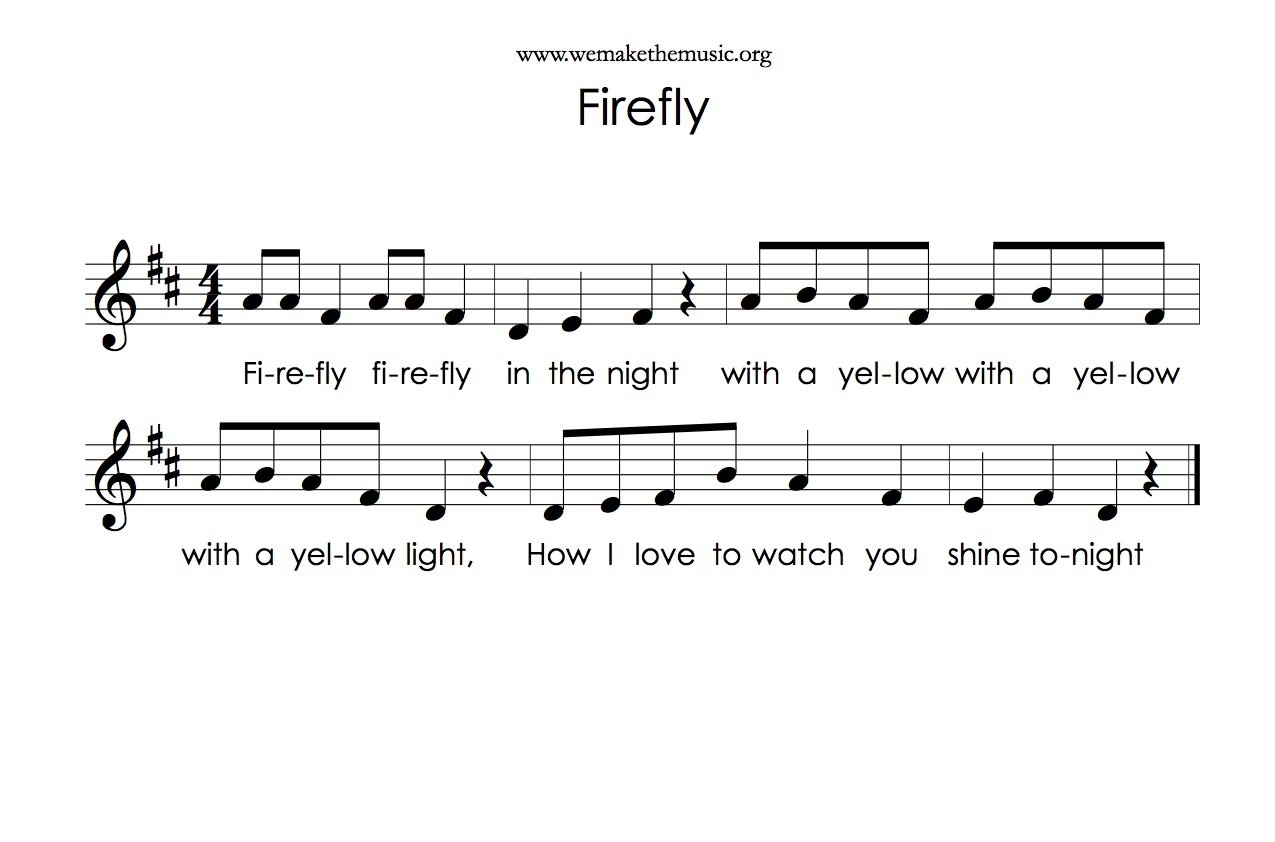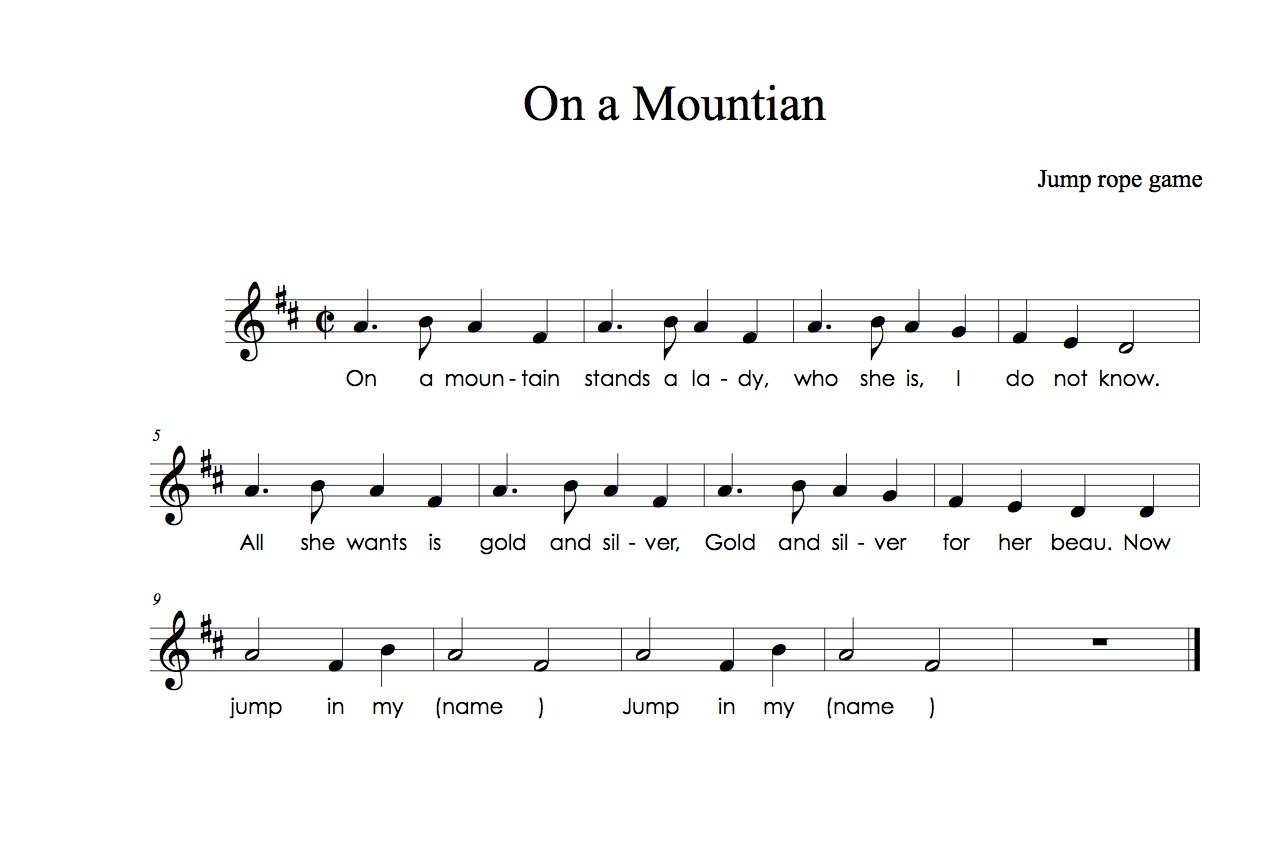The Best Songs for Teaching La
After students have discovered the singing voice, have differentiated between high and low, and have mastered sol and mi, it's time to introduce a new note: la.
Read:
>>> Songs to Teach Sol and Mi
>>> How to Prepare Sol and Mi
>>> How to Present Sol and Mi
>>> How to Practice Sol and Mi
La is an interesting melodic element to teach because it's used primarily in two different ways in most of our folksong literature:
sol mi la
and
sol la sol mi
Although these patterns use the note, la, they both approach the pitch differently. Students will sing each of these melodies naturally, but the way they think about them and become conscious of them may be different.
Our students will have an easier time recognizing "a note higher than sol" when sol comes directly before the new note. The whole step between the two pitches highlights the higher of the two, and helps students differentiate between sol and la. When la is preceded by a pitch much lower (in this case, mi) students can get lost in the jump from the lower pitch to the higher.
In other words, it’s easier for students to hear the step above sol to identify la, rather than a fourth above mi.
That said, here are my favorite songs for teaching la!
Although both sol-mi-la and sol-la-sol-mi appear in a huge amount of folksong literature, I've chosen to share only my favorite sol-la-sol-mi songs.
Enjoy!



1. Apple Tree
There are two songs that every student in my school knows from Preschool to 3rd grade. One of those songs is Apple Tree. I use this song for so many musical concepts including
steady beat
rhythm vs beat
ta and ta-di
sol and mi
la
Do
Improvisation
partwork
The Game
The big beautiful bow that ties all these elements together is my students’ love for the apple tree game! I’ve written about the apple tree game here and here but in case you're not familiar with it, here it is!
To play the game, students sing and walk in a circle keeping the steady beat. Two students (the “apple tree”) hold their hands above heads, creating an arch for students to walk under. On the word "out" the apple tree quickly lowers its branches and traps an apple.
That caught student becomes a new apple tree with the teacher and the game continues - catching more apples, creating more trees, until there is only one apple left.
2. Bluebird
Bluebird is the second song that almost every student in my school knows. Again, the game that students love so much is the only reason I can continue to pull this song out year after year. Bluebird is a big hit in my classroom for:
steady beat
rhythm vs beat
ta and ta-di
Half note
sol and mi
La
Re
Do
The Game
There are lots of different ways out there to play this game, but here’s the version I use:
Children stand in a circle with hands joined and raised to form "windows."
Measures 1 - 4: One child “flaps wings” and weaves in and out the "windows"
Measure 5: The bird taps one child on the shoulder in a steady beat.
Measure 6: The bird taps a second child on the shoulder in a steady beat
Measure 7: The bird taps a third bird on the shoulder in a steady beat
All three chosen students get in line behind the head bluebird and the game begins again. Continue singing until all students are in the bluebird line.
3. Firefly
For something more lyrical that can emphasize beautiful, resonant singing, I turn to Firefly.
I had always sung this song in its english translation until I came across the Japanese version in this recording by Elizabeth Mitchell. If you haven't listened to her music before, please try it out!
I can also use this song to teach:
Uneven phrase length
partwork
Re
Do
Quarter rest
I like to sing this song in a round. We also use a simple bordun to accompany out singing.
4. On a Mountain
Like all the songs that end up on my favorite's list, my students LOVE On a Mountain. And how could you not - when you pair a jumping game with a singing game you have a smash hit!
One reason to love this song is that it can double for both sol la sol mi and sol mi la.
In addition to teaching la, I use this song for:
Ta - mi (or, “tim - ka”)
Fa
Re
Do
The Game:
This is a traditional jump rope song, and like many folk song games, I've seen it played a variety of ways. Here is the way I use it in my classroom:
As everyone sings the first half of the song, two students swing the jump rope while one student jumps. At the lyrics, “jump in my ___” the child in the middle sings the name of a student. Everyone else echoes the next “jump out my ____” with the name of the child leaving the jump rope game. The new student called jumps in, the old student jumps out, and the game begins again.
Why these songs?
These songs make my list of favorites for several reasons:
I love that I can layer concepts with them.
I love that they have an interesting game or musical activity that gets students engaged right away.
I love that they’re enjoyable to sing.
I mostly love how much my students love them!
Happy teaching!

